Learn How To Play Go: The World’s Oldest Game
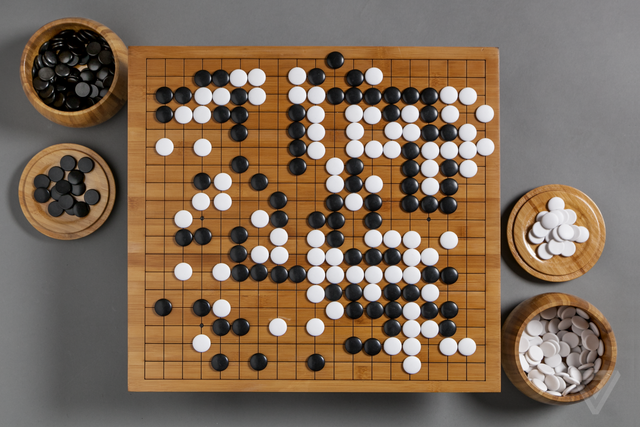
Learn How To Play Go: The World’s Oldest Game
In this short post you are going to learn one of the most fun and difficult board games in the world. Go was created 2000 to 4000 years ago in Ancient China and has slowly gained popularity. It is now the third most popular board game in the world and arguably the toughest. You may have heard of Go from Google’s artificial intelligence that beat the world champion in April (Here's a post about AI dangers). Enjoy as you learn one of the most interesting games in the world!
Traditional Japan
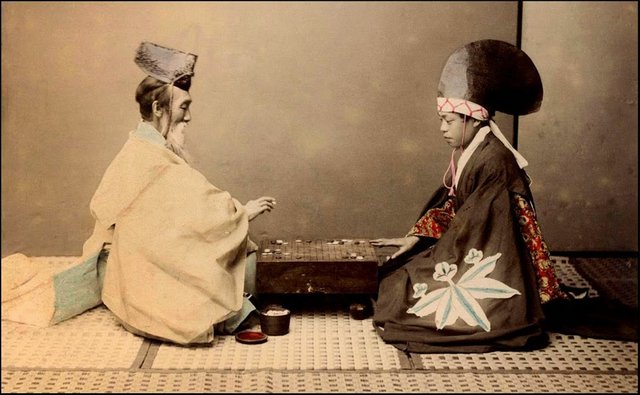
AlphaGo

The Basics
- Go is a non-chance game with perfect information.
- The board sizes are 19x19, 13x13 and 9x9
- Stones are placed on intersections, not squares
- Black goes first
- White gets an extra 6.5 points for going second
Go Has One Rule: Do Not Get Surrounded
The Rule: A group of stones can not be on the board if they have no more liberties, unless they cause the opponent's stones to have no liberties.
This is the fundamental rule of the game, but to understand it, you need to know some basic terminology.
Group: One or more stones (of one color) that are next to each other.
Liberties: Empty space directly above, below, left, or right of a group of one or more stones.
For a stone to become part of a group, it must be placed directly above, below, left or right of at least one stone in that group. The picture below has 5 groups: 2 one stone groups in upper left, a 2 stone group in upper right, a 3 stone group in lower left, and a 8 stone group in lower right.
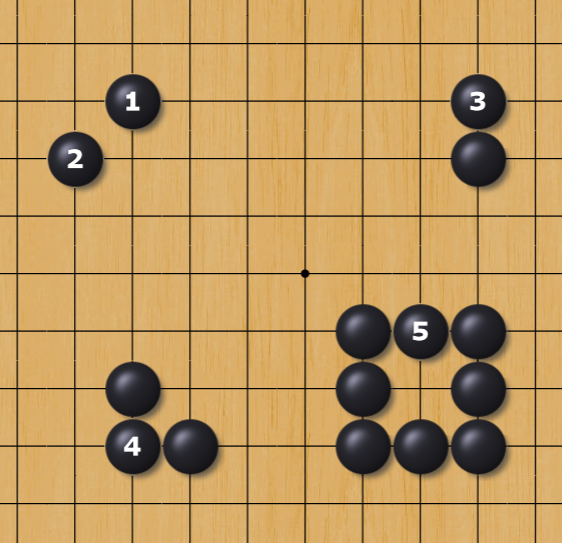
Now look back up to the group picture and count the amount of liberties around each group. You should get the following: 1: 4, 2: 4, 3: 6, 4: 7, 5: 13
Once you know these two definitions, the rule can be understood. Simply, when a group is surrounded, the stones come off the board. You can not place a stone in a place on the board if it makes your group completely surrounded unless it fills in the last liberty of the opponents group. If the move fills in the last liberty of an opponent’s group, their group is completely surrounded and their stones come off the board.
According to the picture below, if white places a stone at any of the X points, it will fill the last liberty of one of black’s groups. That group would then come off the board and be white’s points. White is only allowed to place his stone in the center of black’s lower right group because that move kills the group, otherwise the rule as described in the previous section would be violated.
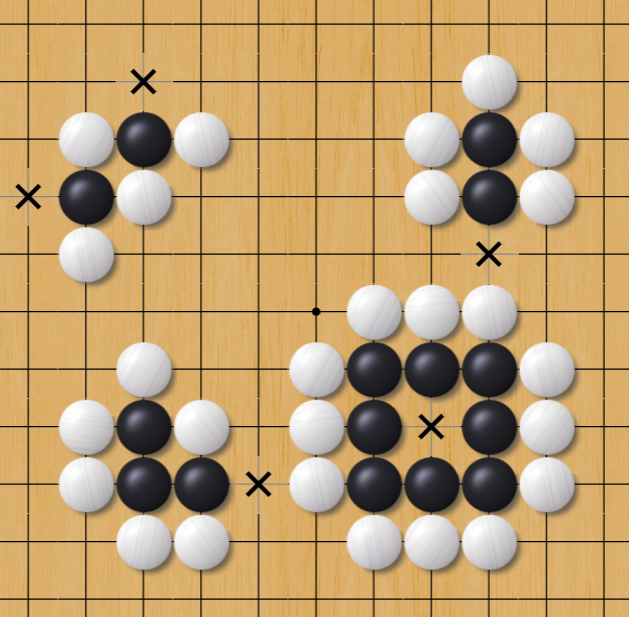
How To Win: Capture and Conquer
You win by having the most points.
Points are awarded for each opponent stone captured and each empty space on the board that is inside your territory
Each stone captured from the opponent is worth 1 point. Therefore, surrounding a 3 stone group is worth 3 points. Each empty space inside your territory is also worth a point. Territory is empty space that your stones surround. However, the stones don’t have to completely surround the space for it to be territory, nor are all surrounded spaces territory. The concept of territory is tricky and will make more sense the more games you play. The board below shows 4 areas of territory. On the board below white has a total of 22 territory points and black has a total of 24.
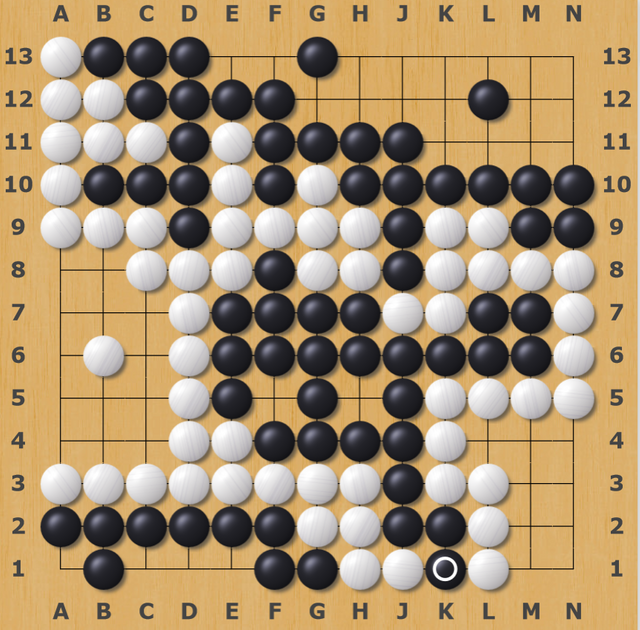
Understanding territory is understanding Go.
Scoring The Game
The game ends when both players pass, meaning they choose not to move because any move would take away points. Then the players take off the “dead” stones still on the board. To find the winner, each player adds their captures with their territory points.
Komi: White Gets Extra For Being White
Before the players compare scores, white gets an extra 6.5 points because black gets an advantage from moving first.
Life and Death
It is often difficult to determine territory in the middle of the game. Therefore, beginners should concentrate on creating strong “living” groups. Living groups have at least two spaces for “eyes” which make them unconditionally alive even when completely surrounded around the outside. Take a look at the shapes below.
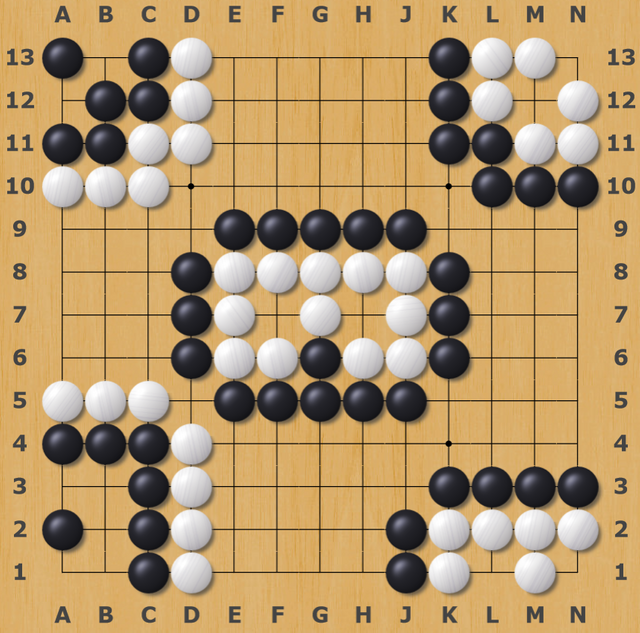
Each shape is alive no matter where the opposing player goes. This is because each shape has two “eyes.”
Eye: an empty space surrounded by one’s stones that is either inside a group or between two inseparable groups
A group with two or more eyes cannot die because the opponent cannot place a stone in either eye without violating the rule. This is because placing a stone in an eye would not take away the group's last liberty/empty space and therefore is an illegal move because that stone would be completely surrounded. Now take a look at the following image that alters the living groups slightly so that they are dead. Try to read out in your mind how the each player should respond and why the groups are dead.
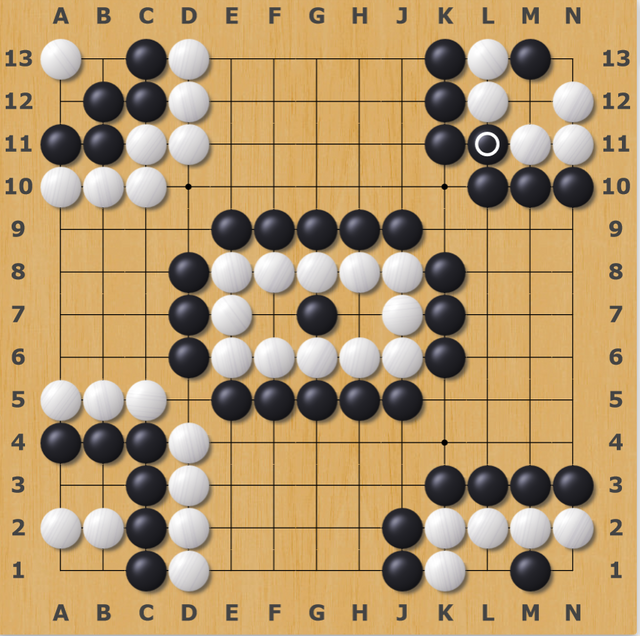
The Ko Rule
A pattern of stones that allows for each player to capture each other back and forth is called a ko.
Ko Rule: A player may not bring the board back to the way it was a turn before
This stops never-ending captures. If we did not have this rule, captures like in the pictures below would happen.
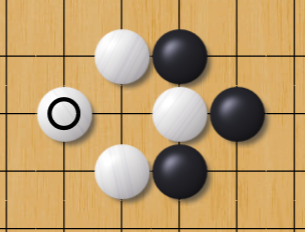
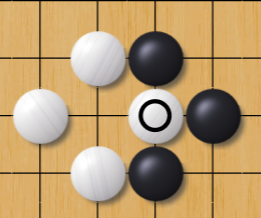
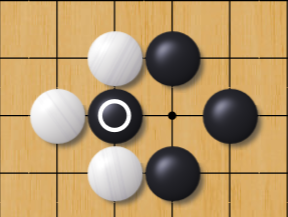
The rule stops the player from taking back the ko immediately. They have to place a different move somewhere else and hope that it forces the opponent to respond in that area, so that they can recapture the stone. This technique of taking back a ko is called a ko threat. Do not worry too much about kos right now.
Tips for Beginners
- The sides and corners are more profitable than the center
- Spread your stones out at the beginning of the game
- Create living groups
- Do not be too attached to your stones
Find Me On Online-Go.com
My username is nettijoe96. I look forward to playing with some of you.
Go is a great game. I'm not very good at it.
I teach English in China and the schools actually have a room dedicated to teaching kids this game. From 6 years old its part of their public school education.
I got into Go about 10 years a go when I was watching Japanese Anime and a really good series called Hikaru No Go about a boy who had the ghost of an ancient master trapped inside him. Good show about modern Japan and Go culture.
Now I want to watch it again. Thanks for reminding me.
Oh Cool, I'll check out the anime!
Feel free to send me a game on OGS. My username is nettijoe96.